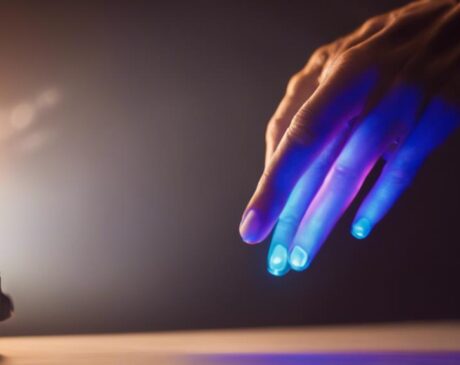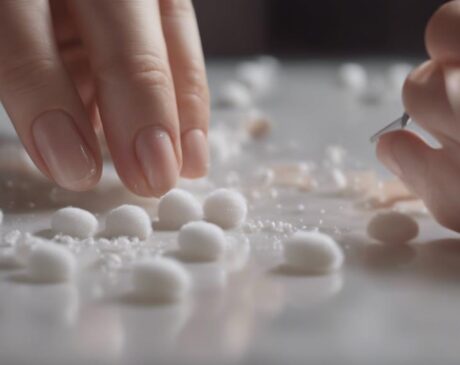How to Make a UV Light?

Create your own UV light with a UV LED strip, power source, wires, soldering iron, and heat shrink tubing. Connect the LED strip to the power source using wires, add a switch and resistor, then assemble everything in a container. Ensure safety by wearing eyewear and gloves, working in a ventilated space, and avoiding direct UV exposure. Test for leaks, intensity, and wavelength. Practical uses include detecting counterfeit money, finding stains, aiding in forensics, and uncovering hidden clues. Try making your UV light today for endless applications!
Key Takeaways
- Connect UV LED strip to power source using wires for illumination.
- Include a switch for light control and a resistor for voltage regulation.
- Securely assemble components in a container to protect the setup.
- Test UV light intensity with a meter and verify wavelength with a spectrophotometer.
- Prioritize safety precautions, wear protective gear, and work in a well-ventilated area.
Materials Needed

To make a UV light, gather the following materials. You'll need a UV LED strip, a power source like a battery pack or adapter, wires for connecting the components, a soldering iron, solder, heat shrink tubing, and a switch if you want to control the light easily. These items are essential for creating your UV light setup. Remember, freedom is key here – you have the power to make decisions on how you want your UV light to function.
The UV LED strip is the heart of your project, emitting the ultraviolet light you desire. The power source will provide the energy needed to light up the UV LEDs. Wires and soldering equipment are crucial for connecting everything together securely. Heat shrink tubing helps protect and insulate the connections, ensuring safety. A switch adds convenience, allowing you to turn the UV light on and off effortlessly. With these materials in hand, you're ready to embark on your UV light-making journey.
Step-by-Step Instructions
Now, let's dive into the step-by-step instructions for assembling your UV light.
- Gather Materials: Collect the LED strip, power source (like a battery pack), switch, resistor, wires, and a container to house the components.
- Prepare the Components: Connect the LED strip to the power source using wires. Add the switch in between the connections to control the light. Include a resistor to regulate the voltage and prevent damage to the LEDs.
- Assemble the UV Light: Place the components inside the container, ensuring the LED strip is positioned to emit light effectively. Secure all connections and components properly. Test the light by turning it on and off to verify functionality.
Safety Precautions

Ensure you wear protective eyewear when working with UV light to shield your eyes from potential harm. UV light can be harmful to your eyes and skin, so taking precautions is essential. Additionally, make sure to wear protective gloves to prevent direct contact with the UV light source, as prolonged exposure can cause skin irritation or burns.
When setting up your UV light, place it in a well-ventilated area to prevent inhaling any harmful fumes that may be emitted during operation. It's also crucial to avoid looking directly at the UV light source, as this can damage your eyes. If possible, use a timer to control the exposure time and limit your contact with the UV light.
Lastly, before starting any UV light project, familiarize yourself with the equipment and safety guidelines. If you experience any discomfort or irritation while working with UV light, stop immediately and seek medical attention if necessary. Remember, safety should always be your top priority when working with UV light.
Testing Your UV Light
When testing your UV light, remember to prioritize safety by following proper procedures and precautions. Before you begin, ensure you have protective gear such as UV-blocking glasses and gloves.
Here's a simple guide to help you test your UV light effectively:
- Check for Leaks: Inspect the UV light for any cracks or damage that could lead to leaks. Turn on the light in a dark room and look for any visible light escaping through the housing.
- Test the Intensity: Use a UV light meter to measure the intensity of the UV light. Keep a safe distance from the light source and point the meter towards it to get an accurate reading.
- Verify Wavelength: Confirm that the UV light emits the correct wavelength for your intended purpose. Use a spectrophotometer to analyze the light spectrum and ensure it falls within the desired range.
Practical Uses

Interested in how you can make the most of your UV light? There are plenty of practical uses for this handy tool that can help you in various aspects of your life.
One common application is using a UV light to detect counterfeit money. Simply shine the light on the bill, and if it shows specific markings or patterns, you'll know it's authentic.
Additionally, UV lights are great for detecting stains on carpets or furniture that aren't visible to the naked eye. By using the UV light, you can pinpoint the exact location of the stain and treat it accordingly.
Another practical use of UV lights is in the field of forensics. Investigators use UV lights to uncover hidden clues at crime scenes that may not be visible under normal lighting conditions. This tool can help solve cases by revealing evidence that would have otherwise gone unnoticed.
Frequently Asked Questions
Can UV Light Be Harmful to Your Eyes or Skin if Not Used Properly?
Yes, UV light can be harmful to your eyes or skin if not used properly. Remember to protect yourself with appropriate gear and follow safety guidelines. Ignoring precautions may lead to potential risks and harm.
How Long Does a UV Light Typically Last Before Needing to Be Replaced?
When using a UV light, remember the adage "all good things must come to an end." Typically, a UV light lasts around 9,000 hours before needing replacement. So, enjoy the glow while it lasts!
Are There Different Types of UV Lights and How Do You Choose the Right One for Your Needs?
When selecting a UV light, consider the type needed for your specific purpose. Check for differences in wavelength, power, and application. Assess your requirements and compare options to find the best fit for your needs.
Can UV Light Be Used to Sanitize Objects or Surfaces in Addition to Its Other Practical Uses?
When needing to sanitize objects or surfaces, UV light can be a powerful ally. It's a versatile tool with the ability to kill germs effectively. Remember, a little UV light can go a long way!
Are There Any Common Mistakes or Pitfalls to Avoid When Making or Using a DIY UV Light?
When making or using a DIY UV light, remember to avoid common mistakes like improper wiring, using incorrect materials, or exposing skin and eyes to UV radiation. Safety first, so research and double-check your setup.




